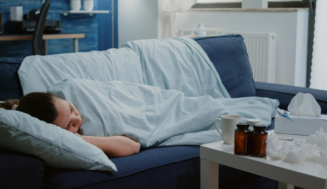Exploring the Enigma of Hypersleep: Unveiling Its Nature

In the annals of science fiction, hypersleep has long captivated our imagination as a fantastical concept—a state of suspended animation that enables interstellar travelers to cross vast cosmic distances while remaining in a deep slumber. Yet, what was once confined to the realms of speculative storytelling is now stirring the curiosity of scientists, researchers, and space enthusiasts alike. As humanity continues to push the boundaries of space exploration, the enigmatic realm of hypersleep has emerged from the realm of fiction and into the realm of scientific inquiry. In this article, we embark on a journey to demystify the concept of hypersleep, delving into its origins, theoretical underpinnings, potential applications, and the challenges that lie ahead. Join us as we navigate through the hibernation pods of imagination and venture into the frontiers of cutting-edge scientific exploration.
Deep Sleep and Hypersleep: Exploring the Boundaries of Fiction and Reality
Hypersleep, often referenced in the realm of science fiction, is a concept where individuals undergo an extended period of deep, uninterrupted sleep. It is distinct from a standard night’s rest, as those in hypersleep may remain in this state for extended durations, sometimes years, without the need for waking up in between. Unlike brief moments of unconsciousness or regular slumber, hypersleep maintains its deep state until external factors or predetermined conditions awaken the sleeper.
Biology During Hypersleep
Although the term might invoke images of suspended animation or cryogenic states, hypersleep retains the basic functions of life. An individual in hypersleep is not motionless or lifeless like in certain cryonic procedures. Instead, vital signs like breathing and blood circulation persist. Essential biological processes, such as metabolic functions and the elimination of waste through urine, continue to function as they would in a regular sleep state. This suggests that, while the individual might be in a profoundly deep sleep, their body is still active at a fundamental level.
Science Fiction versus Reality
The intriguing concept of hypersleep has found its way into numerous science fiction narratives, offering solutions for long-duration space travel or even as a way to bypass time. It captures the imagination, proposing a future where humans can traverse galaxies without aging significantly or skip through decades seamlessly. However, as of the last known data, hypersleep remains predominantly a creation of fiction.
The genuine scientific endeavors, such as cryonics, seek to preserve individuals at low temperatures, but these techniques are fundamentally different from the portrayal of hypersleep in movies. Moreover, the feasibility and safety of long-term cryonic preservation remain topics of debate among scientists.
The Prospect of Real-life Hypersleep
While the idea of achieving true hypersleep is tantalizing, current scientific understanding does not provide a clear pathway to make it a reality. Research into sleep patterns, brain activity, and the requirements of the human body during extended periods of rest is ongoing. It is essential to understand not just the mechanics but also the potential long-term effects on the human brain and body.
In conclusion, while hypersleep remains a captivating concept popularized by science fiction, it hasn’t found a footing in the real world as of yet. However, the ever-evolving landscape of science and technology means that what might seem improbable today could become a reality in the future.
Understanding the Significance of Hypersleep
Hypersleep, when conceptualized, has the potential to revolutionize the field of science and medicine. Unlike the cryonics project, which relies on freezing techniques, hypersleep provides an alternative that might simplify the process of inducing and reviving a long slumber. This unique approach not only offers practical solutions but also addresses a variety of human desires and needs.
Medical Implications of Hypersleep
One of the primary objectives behind the research and development of hypersleep is its application in the medical field. Imagine a scenario where a patient is diagnosed with a currently incurable ailment. Rather than facing the inevitable, they can be placed into hypersleep. This will allow them to ‘wait out’ the time until an effective treatment or cure becomes available. As science and technology evolve concurrently, the gap between diagnosis and treatment might drastically shorten, ensuring patients benefit from future advancements.
Psychological and Societal Uses
Beyond medical applications, hypersleep could cater to the psychological needs of individuals. Some might find their current time period challenging, perhaps due to socio-political unrest, natural disasters, or personal trauma. In such cases, hypersleep could serve as a temporary escape, allowing individuals the choice to ‘awaken’ in a potentially more harmonious era.
Space Exploration and Hypersleep
Popularized by science fiction narratives, the concept of astronauts being placed in a suspended state during long-duration space missions isn’t as far-fetched as one might think. If hypersleep becomes a reality, it could drastically reduce the logistical challenges of space travel. Astronauts could embark on multi-year voyages to distant planets without worrying about the physiological and psychological strains of such prolonged journeys.
Potential Applications and the Future
In essence, if successfully developed, hypersleep could be a multifaceted tool with a myriad of applications. It could be a bridge to the future for patients awaiting medical solutions, an avenue of solace for those seeking escape from their present circumstances, or even a vital resource for future space missions. As research continues, the possibilities seem boundless, highlighting the profound impact hypersleep could have on human society and progress.
Challenges in Achieving Hypersleep
1. Lack of Established Methodology:
The concept of hypersleep, a prolonged state of suspended animation, is intriguing, but science has yet to identify a chemical or physical mechanism that can induce it. While medical procedures can induce states of unconsciousness, such as with anesthesia, they are not suitable for extended periods. Anesthesia, for instance, is tailored for short durations, and its extended use could be detrimental to health.

2. Waking Concerns:
Beyond inducing sleep, the act of waking someone from an extended period of unconsciousness is not yet understood. With current medical interventions, placing someone in a deep sleep or coma doesn’t guarantee a safe or predictable revival. The mechanisms of bringing someone out of a long slumber, especially one lasting for years, remain elusive.
3. Nutritional and Physical Challenges:
During extended periods of unconsciousness, the human body still requires essential nutrients to sustain basic functions. Intravenous (IV) nutrition can provide this, but maintaining an IV for extended periods raises numerous health concerns. Continuous vascular access, for example, increases the risk of complications like gangrene or other vascular diseases.
4. Psychological and Physiological After-effects:
Emerging from hypersleep isn’t just a matter of waking up. Prolonged inactivity can lead to muscle atrophy, skeletal degeneration, and other physical challenges. A person might find it difficult to perform basic functions like walking or talking after such a long period of dormancy. Additionally, the psychological impact cannot be overlooked. The mental toll of waking up after years, with potentially significant gaps in memory and knowledge, would require extensive rehabilitation and support.
5. Lack of Comprehensive Data:
Given that hypersleep remains largely theoretical, there’s limited data on its potential effects, making it difficult to ascertain the readiness or adaptability of an individual emerging from such a state. Without more research and understanding, the complexities of inducing and reviving from hypersleep remain a challenge to navigate.
The Role of Hypersleep in Cinematic Narratives
Hypersleep, often referred to as profound slumber, finds its manifestation across numerous cinematic creations. Its predominant utilization resides within the realm of science fiction and space-centric movies, where filmmakers incline towards this ingenious stratagem. Primarily, when a crew of astronauts embarks on interstellar voyages towards distant planets or celestial missions, the recourse of hypersleep becomes a salient choice subsequent to departure.
The rationale underpinning this choice emanates from the extensive temporal span of these journeys, spanning years on end. Hence, the pragmatic course of action involves embracing suspended animation over enduring a protracted wait spanning years. Moreover, given the protracted duration of the expedition which could potentially exceed the natural lifespan of astronauts, hypersleep emerges as a recurrently employed narrative device within the realm of science fiction cinema.
The annals of cinematic history bear testimony to the prevalence of hypersleep as a thematic motif. Among the echelons of such narratives stand iconic titles like “2001: A Space Odyssey,” “Interstellar,” “Star Trek,” “Futurama,” “Demolition Man,” “Sleeper,” “The Passengers,” “The Day of the Triffids,” and “Invasion of the Body Snatchers.” Despite the ongoing endeavors of scientists striving to fathom the intricacies of hypersleep, its realization remains elusive within the contemporary milieu.
Conclusion
In the ever-evolving tapestry of cinema, hypersleep’s cinematic prominence endures, serving as a conduit for exploring temporal and existential boundaries. The convergence of scientific exploration and narrative creativity continues to beckon audiences towards the mesmerizing prospect of suspended animation, even as the boundary between its fictional allure and tangible actualization remains steadfast.








